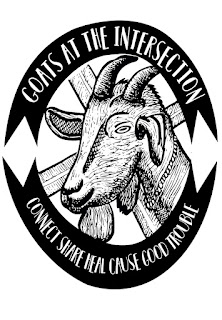Printmaking for everyone to have value and bring goodness into your life
Blog Post 3: Exploring the Symbolism and Meaning in Printmaking
Introduction: Printmaking is not only a visually captivating art form but also one that can convey rich symbolism and meaning. From the earliest prints created for religious and political purposes to contemporary works exploring personal narratives and social commentary, printmakers have used their prints to communicate ideas, provoke thought, and express emotions. In this blog post, we'll delve into the world of symbolism and meaning in printmaking and explore how artists have employed these elements throughout history.
Symbolic Imagery: Printmakers often incorporate symbolic imagery into their prints to convey deeper meaning or evoke specific emotions. Symbolism can be expressed through objects, animals, plants, or even colors. For example, a print featuring a dove may symbolize peace, while a dark and stormy sky might represent turmoil or conflict. Artists carefully select these symbols to create a visual language that resonates with viewers and conveys their intended message.
Social and Political Commentary: Throughout history, printmaking has been a powerful tool for social and political commentary. Artists have used prints to critique social injustices, political regimes, and cultural norms. Francisco Goya's "The Disasters of War" and Kathe Kollwitz's prints depicting the struggles of the working class are notable examples of printmakers using their art to shed light on societal issues. Printmaking allows artists to disseminate their messages widely and make a lasting impact on public consciousness.
Personal Narratives and Emotions: Printmakers often draw upon their personal experiences and emotions to create prints that convey a sense of identity and introspection. They may use printmaking techniques to explore themes such as love, loss, memory, or self-reflection. Prints can serve as a visual diary, allowing artists to express their innermost thoughts and feelings. By sharing their personal narratives through prints, artists connect with viewers on an intimate level, fostering empathy and understanding.
Cultural and Historical Context: Printmaking has a long-standing tradition of reflecting the cultural and historical context in which it is created. Prints can capture the spirit of a particular time, documenting significant events or societal changes. For example, Japanese ukiyo-e prints depicted scenes from everyday life during the Edo period, while the Dada movement used prints to challenge traditional artistic conventions in the early 20th century. By exploring prints from different time periods, viewers can gain insights into the cultural, political, and historical landscapes of the past.
Conclusion: Symbolism and meaning play a significant role in the world of printmaking, allowing artists to communicate ideas, provoke thought, and evoke emotions. Whether through symbolic imagery, social and political commentary, personal narratives, or cultural and historical context, printmakers have used their art to engage viewers on multiple levels. The power of printmaking lies not only in its visual appeal but also in its ability to convey profound messages that transcend time and resonate with audiences across generations.


Comments
Post a Comment